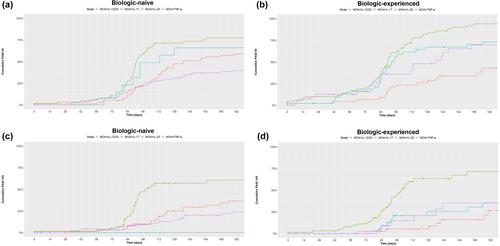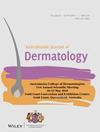Biologic treatment sequences in moderate-to-severe psoriasis
Abstract
Background
The advent of novel biologics has led to an increase in biologic-switching as patients and clinicians pursue improved clinical outcomes. However, guidance on treatment sequencing in an Australian setting is sparse. This study examines the patterns of care across two tertiary centres in Australia and characterizes the factors contributing to biologic-switching.
Methods
A retrospective study of patients who attended the outpatient Dermatology biologic clinics across two tertiary hospitals was conducted. Data on treatment sequencing and patients' PASI at every visit from April 2006 to December 2020 were collected. Patterns of biologic-switching were examined. The speed of treatment response for each biologic was determined by the time to achieve PASI-90 and -100 for each treatment course.
Results
A total of 440 treatment courses were analysed. Ustekinumab and adalimumab were the most frequently prescribed first-line biologics. The highest proportion of biologic-switching was observed among patients on TNF-α inhibitors (63.8%). After 2015, more patients were prescribed IL-12/23 and IL-17 inhibitors in favour of TNF-α inhibitors. IL-17 inhibitors demonstrated the most rapid treatment response and low PASI scores relative to other biologics. Patients who did not switch biologics had lower rates of psoriatic arthritis and lower BMI, compared to patients who switched biologics. The median PASI on discontinuation generally exceeded 3.0, while on continuation, it was less than 1.2, reflecting patients' and clinicians' thresholds for biologic-switching.
Conclusions
This study demonstrates an increased uptake of more novel biologics as they become available, due to improved safety profiles and clinical outcomes.


 求助内容:
求助内容: 应助结果提醒方式:
应助结果提醒方式:


